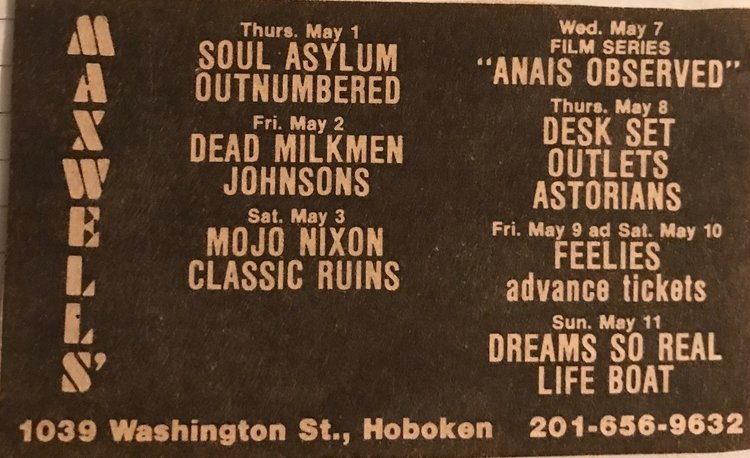Someone went through a great deal of effort to stitch together a montage of dance scenes from some 300 feature films. Below find a list of films in order of their appearance, and with the appropriate timestamp.
00:00:06 — Tropic Thunder (2008)
00:09:17 — 10 Cloverfield Lane (2016)
00:10:10 — Frank (2014)
00:11:02 — Deadpool (2016)
00:12:02 — Girlhood (2015)
00:13:10 — West Side Story (1961)
00:16:18 — Scott Pilgrim vs. the World (2010)
00:18:00 — Big (1988)
00:18:14 — Risky Business (1983)
00:19:05 — Forrest Gump (1994)
00:19:21 — 20th Century Women (2016)
00:21:02 — God Help the Girl (2014)
00:22:07 — Begin Again (2013)
00:23:16 — The Rocketeer (1991)
00:25:13 — Dead Poets Society (1989)
00:27:21 — Braveheart (1995)
00:28:22 — Snow White and the Seven Dwarfs (1937)
00:29:23 — Robin Hood (1973)
00:31:00 — Austin Powers: The Spy Who Shagged Me (1999)
00:32:14 — Titanic (1997)
00:33:14 — Big Fish (2003)
00:35:07 — Go (1999)
00:36:14 — Fiddler on the Roof (1971)
00:37:12 — Citizen Kane (1941)
00:38:12 — Life is Beautiful (1997)
00:40:01 — White Nights (1985)
00:42:08 — Swing Time (1936)
00:44:13 — Pee-wee’s Big Adventure (1985)
00:45:21 — Mermaids (1990)
00:48:14 — Home Alone (1990)
00:49:18 — Mulholland Drive (2001)
00:50:22 — Boy (2010)
00:51:20 — Girl Asleep (2015)
00:52:08 — Despicable Me (2010)
00:55:05 — Airplane (1980)
00:57:08 — Carrie (1976)
00:58:21 — Love, Rosie (2014)
00:59:21 — The Mask (1994)
01:00:14 — Dope (2015)
01:01:13 — Rock of Ages (2012)
01:02:21 — Robin Hood: Men in Tights (1993)
01:04:14 — Monthy Python and the Holy Grail (1975)
01:04:19 — Kung Fu Hustle (2004)
01:05:12 — Bill & Ted’s Excellent Adventure (1989)
01:06:07 — (500) Days of Summer (2009)
01:08:23 — Star Wars: Episode IV — A New Hope (1977)
01:10:03 — The Muppets (2011)
01:11:00 — Revenge of the Nerds (1984)
01:10:03 — The Muppets (2011)
01:14:00 — Love Actually (2003)
01:16:05 — Mean Girls (2004)
01:19:01 — Austin Powers in Goldmember (2002)
01:20:15 — Scarface (1983)
01:22:05 — Grease (1978)
01:24:22 — It’s a Wonderful Life (1946)
01:26:13 — The Lord of the Rings: Return of the King (2003)
01:28:13 — Young Frankenstein (1974)
01:29:16 — Get Smart (2008)
01:31:07 — My Fair Lady (1964)
01:32:12 — An Education (2009)
01:33:21- The Deer Hunter (1978)
01:35:06 — The Sitter (2011)
01:35:22 — Up in the Air (2009)
01:36:20 — Silver Linings Playbook (2012)
01:38:10 — This Is the End (2013)
01:39:13 — Hairspray (2007)
01:40:07 — Dumb and Dumber (1994)
01:41:03 — The Way Way Back (2013)
01:42:01 — Moonrise Kingdom (2012)
01:43:05 — Blazing Saddles (1974)
01:44:05 — Adventures in Babysitting (1987)
01:45:18 — Shrek 2 (2004)
01:47:18 — Flashdance (1983)
01:48:14 — The Gold Rush (1925)
01:49:10 — Magic Mike (2012)
01:50:20 — Viva Las Vegas (1964)
01:52:00 — Clerks II (2006)
01:53:10 — The Great Gatsby (2013)
01:54:08 — Eagle vs Shark (2007)
01:57:06 — What We Do in the Shadows (2014)
01:58:15 — The Cabin in the Woods (2012)
01:59:17 — Rush Hour (1998)
02:01:17 — Eyes Wide Shut (1999)
02:02:17 — The Last Picture Show (1971)
02:03:18 — Band of Outsiders (1964)
02:05:23 — Weird Science (1985)
02:07:15 — Reservoir Dogs (1992)
02:09:10 — Batman (1989)
02:12:20 — Mommy (2014)
02:14:00 — Desperately Seeking Susan (1985)
02:15:20 — Hot Shots! (1991)
02:16:14 — Borat (2006)
02:17:14 — American Beauty (1999)
02:18:18 — Moonlight (2016)
02:19:14 — Superbad (2007)
02:20:15 — Garden State (2004)
02:21:15 — Royal Wedding (1951)
02:22:17 — The Big Lebowski (1998)
02:24:07 — My Week with Marilyn (2011)
02:25:13 — Mary Poppins (1964)
02:27:20 — Kickboxer (1989)
02:29:07 — The Blues Brothers (1980)
02:30:21 — Bring it On (2000)
02:32:07 — Ferris Bueller’s Day Off (1986)
02:33:17 — Trainspotting (1996)
02:34:10 — American Gangster (2007)
02:34:21 — Don Jon (2013)
02:35:14 — Morris from America (2016)
02:36:08 — Hunt for the Wilderpeople (2016)
02:36:08 — A.I. Artificial Intelligence (2001)
02:39:06 — Striptease (1996)
02:40:10 — Donnie Darko (2001)
02:41:04 — The Pink Panther (1963)
02:41:20 — Monsters University (2013)
02:43:09 — Everybody Wants Some (2016)
02:44:18 — Clueless (1995)
02:46:13 — The Imaginarium of Doctor Parnassus (2009)
02:47:04 — All That Jazz (1979)
02:48:04 — The Princess Diaries (2001)
02:50:16 — Sing Street (2016)
02:52:12 — While We’re Young (2014)
02:54:06 — Once Bitten (1985)
02:55:15 — Lost River (2014)
02:56:10 — Ruby Sparks (2012)
02:58:03 — Saturday Night Fever (1977)
02:59:05 — Boogie Nights (1997)
03:00:15 — The Reunion 2: The Funeral (2014)
03:01:11 — American Hustle (2013)
03:02:20 — Ex Machina (2015)
03:04:10 — The Losers (2010)
03:06:00 — Little Miss Sunshine (2006)
03:06:20 — The Best Man Holiday (2013)
03:07:10 — Step Up Revolution (2012)
03:08:19 — Shaun of the Dead (2004)
03:10:07 — Billy Elliot (2000)
03:11:22 — Funny Face (1957)
03:14:09 — King of New York (1990)
03:15:10 — Mistress America (2015)
03:16:13 — The Perks of Being a Wallflower (2012)
03:17:15 — Save the Last Dance (2001)
03:18:14 — Elf (2003)
03:19:03 — The Edge of Seventeen (2016)
03:19:16 — Little Sister (2016)
03:21:00 — The Rocky Horror Picture Show (1975)
03:22:04 — Moon (2009)
03:23:12 — The Boondock Saints (1999)
03:26:03 — Monsters University (2013)
03:27:08 — Let’s Be Cops (2014)
03:29:09 — The World’s End (2013)
03:31:04 — Fun Size (2012)
03:32:10 — Spider-Man 3 (2007)
03:34:14 — To Die For (1995)
03:35:16 — The Breakfast Club (1985)
03:37:11 — The Goonies (1985)
03:38:11 — The Wolf of Wall Street (2013)
03:39:15 — Blue Valentine (2010)
03:41:01 — Napoleon Dynamite (2004)
03:42:22 — Popstar: Never Stop Never Stopping (2016)
03:43:16 — 13 Going On 30 (2004)
03:44:04 — Wedding Crashers (2005)
03:44:15 — Pitch Perfect (2012)
03:45:07 — Wayne’s World (1992)
03:45:21 — Milk (2008)
03:46:11 — Something Borrowed (2011)
03:47:17 — School of Rock (2003)
03:48:16 — Hitch (2005)
03:49:19 — The Kings of Summer (2013)
03:50:17 — Bling Ring (2013)
03:52:10 — Neighbors (2014)
03:53:04 — Animal House (1978)
03:54:07 — A League of Their Own (1992)
03:55:19 — Hot Rod (2007)
03:57:11 — Zoolander (2001)
03:58:17 — Gentlemen Prefer Blondes (1953)
03:59:17 — The Great Dictator (1940)
04:01:23 — Charlie’s Angels (2000)
04:03:03 — Romeo + Juliet (1996)
04:04:05 — Kill Your Darlings (2013)
04:05:02 — Amadeus (1984)
04:06:00 — Days of Heaven (1978)
04:10:07 — Lars and the Real Girl (2007)
04:12:15 — The Lobster (2015)
04:14:01 — House of Flying Daggers (2004)
04:15:13 — Big Night (1996)
04:17:23 — Band of Robbers (2015)
04:19:06 — Almost Famous (2000)
04:21:03 — Rain Man (1988)
04:22:15 — Brooklyn (2015)
04:23:10 — The Imitation Game (2014)
04:24:09 — Moulin Rouge! (2001)
04:27:13 — Slumdog Millionaire (2008)
04:29:12 — The Godfather (1972)
04:30:11 — The Sound of Music (1965)
04:32:01 — Dirty Dancing (1987)
04:34:08 — Focus (2015)
04:35:10 — The Dark Knight Rises (2012)
04:36:08 — Zombieland (2009)
04:37:07 — Beauty and the Beast (1991)
04:40:23 — The Addams Family (1991)
04:44:06 — Beetlejuice (1988)
04:47:02 — Eternal Sunshine of the Spotless Mind (2004)
04:49:12 — Like Crazy (2011)
04:50:09 — End of Watch (2012)
04:51:14 — Pretty in Pink (1986)
04:53:03 — House Party (1990)
04:54:05 — Along Came Polly (2004)
04:55:23 — Some Like it Hot (1959)
04:56:23 — Reality Bites (1994)
04:59:01 — Wet Hot American Summer (2001)
05:01:10 — Obvious Child (2014)
05:02:14 — The Man from U.N.C.L.E (2015)
05:04:14 — Lost in Translation (2003)
05:06:03 — Guardians of the Galaxy (2014)
05:06:18 — A Clockwork Orange (1974)
05:08:14 — Harry Potter and the Goblet of Fire (2005)
05:09:16 — Star Wars: Episode VI — Return of the Jedi (1983)
05:10:18 — Penguins of Madagascar (2014)
05:11:19 — European Vacation (1985)
05:13:02 — The Wizard of Oz (1939)
05:15:04 — The Inbetweeners Movie (2011)
05:16:12 — Three Amigos (1986)
05:18:00 — The 40 Year Old Virgin (2005)
05:18:23 — A Night At The Roxbury (1998)
05:20:01 — Coming To America (1988)
05:20:21 — Cinderella (2015)
05:21:17 — About Time (2013)
05:23:16 — Groundhog Day (1993)
05:25:03 — Chef (2014)
05:26:07 — Somewhere (2010)
05:28:08 — Office Space (1999)
05:30:03 — Shall We Dance (2004)
05:31:04 — The Artist (2011)
05:31:18 — The Red Shoes (1948)
05:33:21 — Strictly Ballroom (1992)
05:36:07 — The Turning Point (1977)
05:37:05 — Do the Right Thing (1989)
05:38:03 — Singin’ In The Rain (1952)
05:39:09 — Chicago (2002)
05:41:09 — Footloose (1984)
05:43:17 — When Harry Met Sally… (1989)
05:45:02 — The Producers (1967)
05:46:05 — The Full Monty (1997)
05:47:20 — Back to the Future Part III (1990)
05:49:00 — Dances with Wolves (1990)
05:50:07 — Hook (1991)
05:50:22 — Short Circuit (1986)
05:51:13 — Pulp Fiction (1994)
05:53:08 — Only Lovers Left Alive (2013)
05:53:22 — Dazed and Confused (1993)
05:54:20 — From Dusk Till Dawn (1996)
05:55:16 — My Golden Days (2015)
05:56:12 — Midnight in Paris (2013)
05:58:21 — The Naked Gun 2½: The Smell of Fear (1991)
05:59:12 — The Intouchables (2011)
06:00:10 — Les Misérables (2012)
06:01:08 — A Royal Affair (2012)
06:02:11 — King Kong (2005)
06:03:17 — Happy Feet (2006)
06:04:20 — Tangled (2010)
06:06:01 — Tarzan (1999)
06:07:01 — Top Hat (1935)
06:08:01 — Hail, Caesar (2016)
06:09:05 — Center Stage (2000)
06:10:03 — American Pie (1999)
06:11:10 — A Hard Days Night (1964)
06:12:01 — 45 Years (2015)
06:12:15 — La Dolce Vita (1960)
06:13:10 — O Brother, Where Art Thou? (2000)
06:14:00 — West Side Story (1961)
06:14:20 — Straight Outta Compton (2015)
06:15:12 — La La Land (2016)
06:16:12 — Her (2013)
06:17:08 — Being John Malkovich (1999)
06:18:03 — Flashdance (1983)
06:19:01 — Barton Fink (1991)
06:19:22 — The Artist (2011)
06:24:09 — Casablanca (1942)
06:26:13 — Sunset Boulevard (1950)
06:27:15 — Black Book (2006)
06:28:08 — Edward Scissorhands (1990)
06:29:17 — Labyrinth (1986)
06:31:18 — Short Term 12 (2013)
06:33:18 — When Marnie Was There (2014)
06:36:18 — Before Sunrise (1995)
06:37:15 — Scent of a Woman (1992)
06:39:14 — Sabrina (1954)
06:40:20 — Lolita (1962)
06:41:23 — Schindler’s List (1993)
06:42:14 — Gangs of New York (2002)
06:43:16 — Black Swan (2010)
06:44:23 — Pride and Prejudice (2005)
06:46:15 — Sweeney Todd: The Demon Barber of Fleet Street (2007)
06:48:06 — Up (2009)
06:49:23 — One Flew Over the Cuckoo’s Nest (1975)
06:51:05 — Out of Africa (1985)
06:52:22 — Jackie (2016)
06:54:15 — Rushmore (1998)







